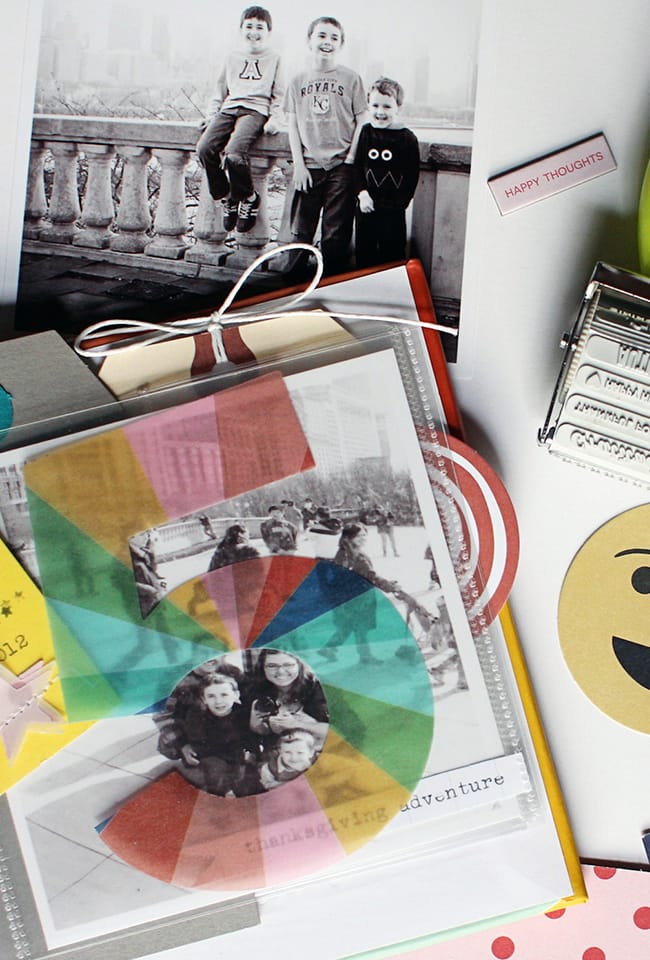Ten Watercolor Techniques You'll Love

As beautiful as it is versatile, watercolor is the go-to medium for many crafters who want to add more color to their projects. Big Picture Classes teachers are sharing inspiration, tips, and techniques for incorporating watercolors into your projects. Use everyday objects, like straws and paper towels, to create unique watercolor textures. Perfect the resist technique. Learn how to script beautiful watercolor letters. Try out these watercolor techniques and more with BPC teachers!

Add watercolor to your stamps.
Suzy Plantamura, 5 Ways to Use Watercolor, "Stamped Projects"
For this technique, I embossed the stamped images with clear embossing powder before painting so the images are white. Of course, I could have used black ink with these instead and just painted them in, but the white puffy outlines keep the paint where you want it (inside the images) and give your painting a softer look than black outlines would. To finish this card, I added some squiggly lines and a sentiment from the same stamp set using black Archival ink and attached it to a pink card base.

Use a straw to create a unique border.
Caylee Grey, Art Journaling 101, "Technique"
This is a really fun technique that you can do with watercolors and a straw. To achieve this look, get your paint brush really wet—load it up with lots of watercolor. Place it in a small spot, put a straw on top of it—angled—and blow to splatter the paint. It's going to create a really interesting "running off the page" effect. And, you can do this so many ways. Make patterns or shapes. Lay down a stencil and create a negative space. There's so many things you can do with this technique using such a simple item.

Use masking fluid to create negative space in your watercolor.
Jen Schow, Script in Your Scrapbook, "Script Your Titles"
Using a Molotow Masking Pen, or masking fluid, write out your title on the page. It’s going to dry sticky and resist anything you put over it. Make sure you get a nice even coat, otherwise it won’t properly protect what’s underneath. Then let it dry completely—you can tell its dry when it becomes tacky to the touch. Once your lettering is dry, create a wash effect by using several different colors on top using a brush with a wide tip. I started with pink, using a lot of water, and went over the lettering lightly. Then I added the teal, working my way up to the pink to combine them together.
You will see the watercolor beading up on the areas you applied the masking fluid. That is the part we will peel off. Once the watercolor is completely dry, you’re ready to peel off the masking fluid. You can do this by simply rubbing your finger over it. Or, you can use an adhesive remover, which lifts the fluid easily. Simply rub it over top to reveal white underneath. The masking fluid protects your page from the watercolor, and it’s a really cool effect. Be aware that the pen reacts differently on different types of surfaces. I used textured white cardstock. Make sure to test a small area before you use it on a whole background so you know it will work on the paper that you have.

Use a paper towel to mix watercolors.
Irit Landgraf, Watercolor Backgrounds, "Paper Towel Play"
When first applying your watercolor to the background, be generous with the water. We want the colors to flow, and for that, we need some water! Use a little piece of paper towel; while we paint, it should get loaded with watercolor and water, so we can use it for adding extra texture. Use colors that are close to each other on the color wheel, because there's a lot of color mixing here. I chose yellow, turquoise, and green. Be free with your movements as you pull the watercolor with the paper towel. We want energy and movement!

Use different strokes to perfect watercolor lettering.
Amanda Arneill, Lettering with Watercolor, "Writing with Watercolors"
The thing that makes beautiful lettering stand out is having variety in the width of the strokes. What I mean by that is that a stunning alphabet will have some lines that are thinner and some lines that are thicker. You know which lines should be thicker and which should be thinner by following the upstroke and downstroke rules. Downstroke Rule: Any time your waterbrush moves down the page (toward your body), you want to use pressure on the brush to make a thicker line. Upstroke Rule: Any time your waterbrush is moving away from you or across the page, you want to use no pressure and just let the very tip of the paintbrush make a mark. Simple as that!

Use Gelatos to create a watercolor effect.
Rut Bermell, 6 Ways to Use Gelatos, "Watercolor Background"
Choose some colors you want to use for your background. You can choose a monochromatic palette or a mix of different colors as well. Spread gesso onto a 12" x 12" piece of cardstock. This is the most important step in the process. Gelatos can be used dry or wet, but when using them wet, you'll want to add gesso to the background to give it more stability. The gesso will prevent the water from seeping into your paper and warping it.
Once your gesso is dry, paint the cardstock with Gelatos, and then spray with water. Don't be afraid to spray a lot of water! You need to mix the Gelatos together to create the watercolor effect. Take your piece of cardstock, and turn it around to let the water fall down. Use a heat tool to accelerate the drying process. To decorate your masterpiece, use a stencil and add spray ink. I used gold spray ink, because I love how gold goes with pink. Now, choose a bright photo that pops against the background you created. Add some embellishments, and you have a vibrant and colorful layout! This technique is very easy and allows you to create various backgrounds just by rotating your cardstock in different directions.

Use gravity to your advantage.
Julie Campbell, Postmarked | 01, "Watercolor Cards"
This is where your watercolor palette can really shine. Create a rainbow effect on the top of your card by going down your water color palette in rainbow order. Then add some water to the top of your card, allowing the colors to drip down the card front. Tap to encourage those drips to go down the card. You can always add more color if you need to. Let gravity work with you to create visual movement through color.

Combine watercolor with stitching.
Paige Evans, Paige's Pages | 09, "Stitch & Paint"
Using a needle, I pierced a hole every quarter inch or so along my stencil, then erased the pencil outline. I stitched with a basic back-stitch. Then, I simply painted in the flowers. I like to paint after I’ve done the stitching, because the thread keeps the paint in place for the most part. Yes, the color does get on the thread, but I like that look. Once everything is dry it’s time to start embellishing. Remember to balance the colorful florals and photos going on by leaving one corner empty. Match your paint colors to the supplies you plan to use so everything coordinates!

Use gel medium as a resist.
Lisa Spangler, Painted Notes, "A Gel Medium Technique You Can't Resist"
For this card, I did the resist technique over a watercolor background. I used neon watercolors so that they'd really pop against the black gouache. Start with your dried watercolored piece and lay your stencil overtop, positioning it so you can see the most watercolor peeking through. Swipe the gel medium over the stencil with a tool, such as a small crafting spatula. Carefully peel off the stencil while the gel medium is still wet (and wash the stencil so the gel medium doesn’t dry on it).
Using a paintbrush, apply a black wash. Before it completely dries, use a baby wipe to remove the wash from the gel medium. The gel will resist the wash and show the watercolor underneath. To finish it up, I simply stamped the "let's celebrate" message and layered it to black glitter paper, then tied on some twine. I think this card is perfect for my teenaged nephew!

Create a background with "Ink Smooshing."
Jenn Shurkus, Distress Ink Card Techniques, "Watercolor Background"
This technique can be used for a variety of cards and in different color combinations. Use two to three colors of Distress Inks. Taking your Distress Ink pad, press down and twist leaving ink behind on the craft sheet. Repeat with your secondary color. Spritz water on the ink with a mister, and be sure to use a lot of water so there are big droplets on your craft sheet. Embrace that you won’t be able to control the outcome 100%—it's all about playing and getting different results.
Press your distressed watercolor cardstock into the ink. Once you have the first layer, heat set it. For the next layer, repeat the entire process, starting with layering the ink, spritzing with water, and then pressing the background into the color. Layer two should add some more textures. Once again, heat set the layer. If you get pooled water, you can blot with a baker’s cloth for more texture. Repeat these steps for more layers until you are happy with the finished product.
Are you inspired to grab your paint brushes? Watercolor brings dimension and texture to your projects with the perfect pop of color! Try out these ten watercolor techniques, and then be sure to check out each class for even more tips and inspiration. As a member of Big Picture Classes, you get access to our entire library of classes. Sign up now and start exploring!





Sign in or sign up to comment.
0 comments